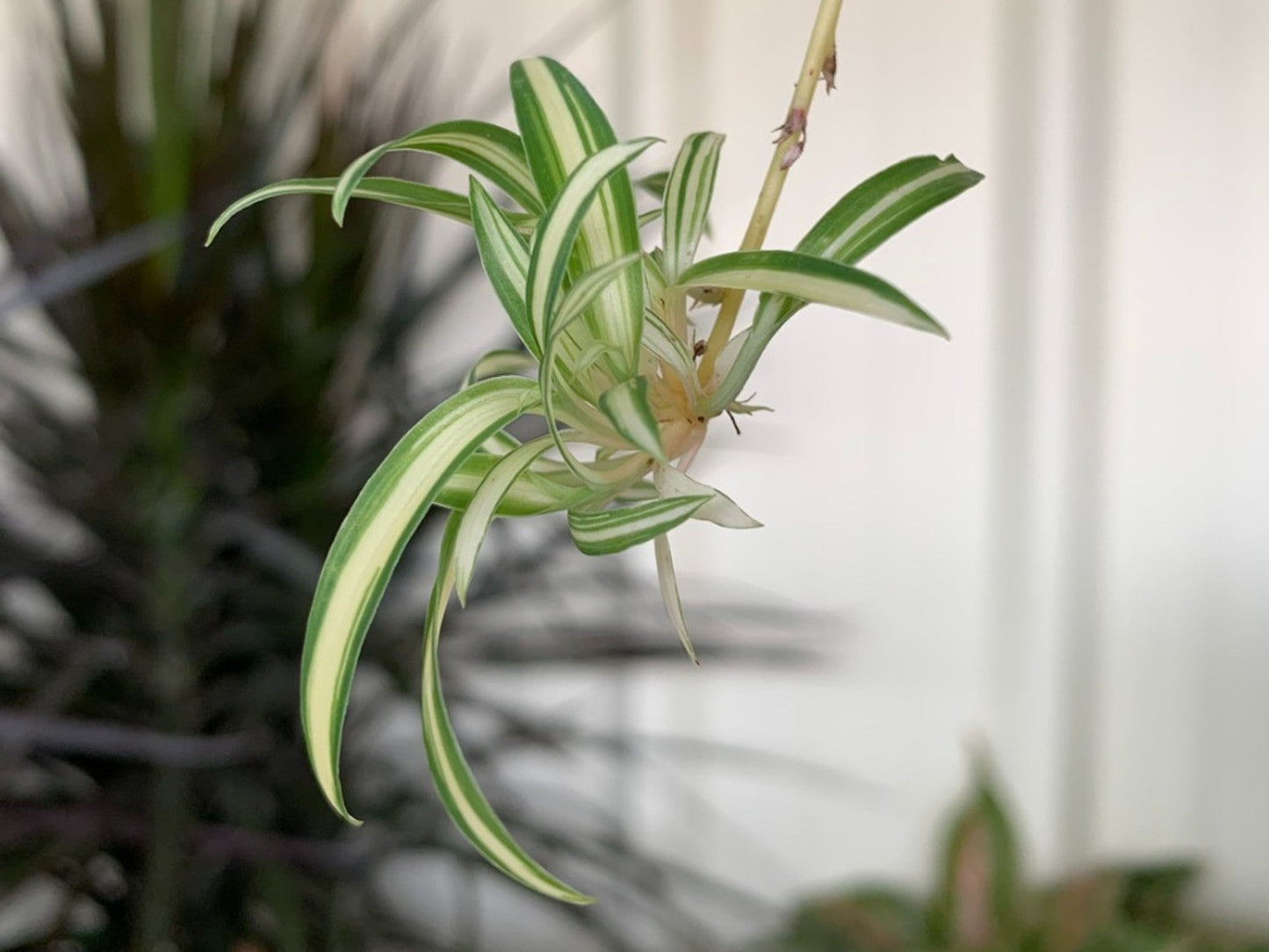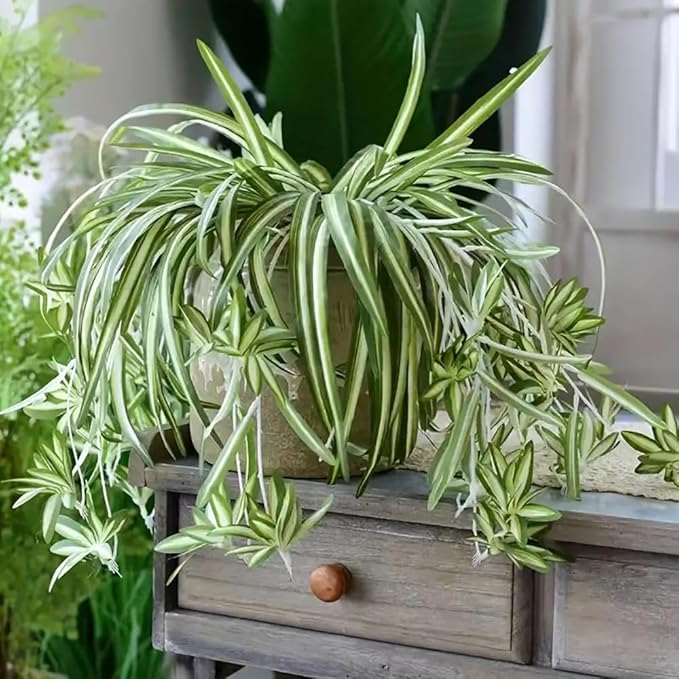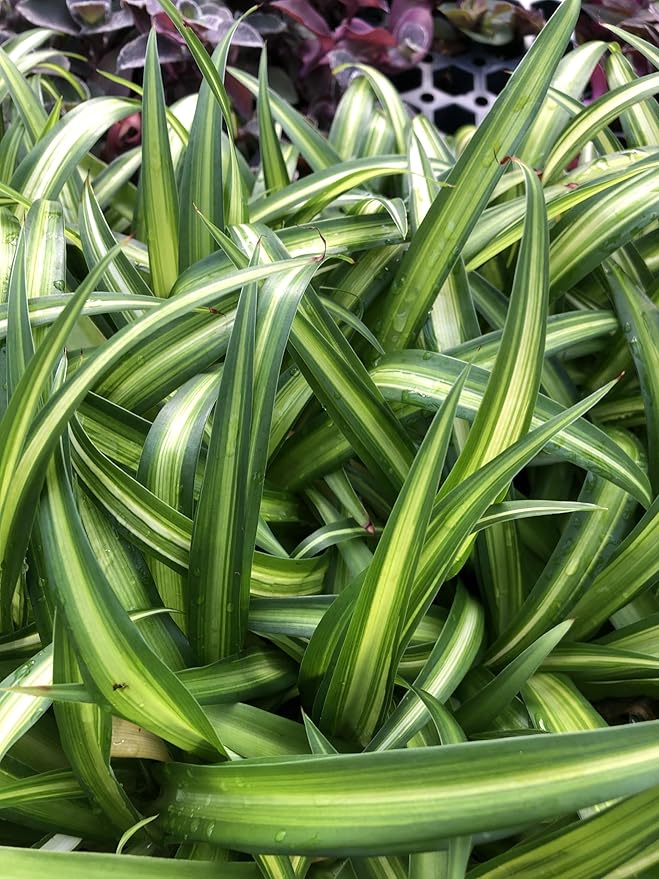Ribbon plant aka Spider Plant baby with roots, propagated and grown at our farm, starter air plant
Ribbon plant aka Spider Plant baby with roots, propagated and grown at our farm, starter air plant
Spider Plant pups now available!!! $7.77 for 1 or $20 for 5!
🪴Spider plants, also known as Chlorophytum comosum, have fleshy, tuberous roots and rhizomes that store water and help them survive inconsistent watering. This rhizomatous root system is a natural adaptation that helps the plant in its native region of coastal South Africa.
Here are some other things to know about spider plant roots:
🪴Spiderettes: The ends of spider plant stolons can develop fat roots called spiderettes, which is a natural way for the plant to spread vegetatively. In the wild, these spiderettes would root away from the mother plant.
🪴Stressed plants: Stressed spider plants can also form tuber-like water storage organs.
Propagating: When propagating spider plants, you can root them in water or soil. If you propagate them in water, roots will form in about 7–10 days, but the roots will be stronger if you use soil, though it may take longer. Before transplanting a baby plant into a pot with soil, wait until its roots are at least 2–3 inches long.
🪴Spider plants boast a rhizomatous root system, which is like nature's version of a survival kit. These roots store water, allowing the plant to forgive your forgetful watering habits. The roots are tuberous and fleshy, and they're the reason your spider plant doesn't throw a fit if you miss a watering or two.
Couldn't load pickup availability
20 in stock
View full details



